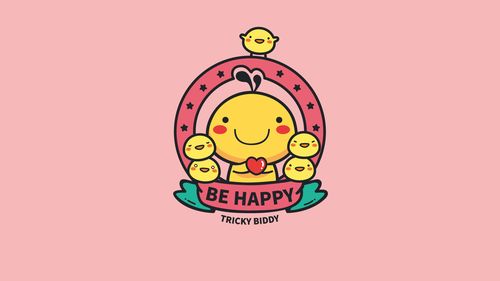admin管理员组文章数量:1794759

CSS3学习笔记
文章目录
- 一、全局选择器
- 二、标签选择器
- 三、结构选择器
- 3.1 后代选择器(华夏子孙 向下无限选择)
- 3.2 > 儿子选择器 只往下选择一层
- 3.3 ~ 兄弟选择器
- 3.4 + 铁兄弟(紧挨着的)
- 四、[] 属性选择器
- 4.1 ^ 以什么开始 $以什么结束
- 4.3 ~ 属性里边有这个值
- 4.4 * 属性里边有这个字符串
- 4.5 | 以什么开始 可以跟-符号 也可以选中
- 五、伪类选择器
- 5.1 常见伪类列表
- 5.2 :target 选择器可用于选取当前活动的目标元素
- 5.3 :empty 隐藏空的元素
- 六、结构伪类选择器
- 6.1 :firsrt-child 选择器匹配其父元素中的第一个子元素。
- 6.2 :first-of-type 匹配其父元素下特定类型的第一个子元素。
- 6.3 :last-child :last-of-child 用法类似
- 6.4 :only-child 选择唯一的子元素
- 6.5 :only-of-type 代表了任意一个元素,这个元素没有其他相同类型的兄弟元素
- 七、根据元素编号灵活选择
- 7.1 :nth-child() 根据元素编号灵活选择
- 7.2 :nth-child(n) 选择父元素下的所有元素
- 7.3 :nth-child(2n) 偶数行变色
- 7.4 :nth-child(2n-1) 基数行变色
- 7.5 :nth-child(-n+4) 选取指定的前几个
- 7.6 :nth:child(n+4) 从第几个开始
- 7.7 h1:nth-of-type() 找出父元素下指定类型的第几个元素
- 7.8 :nth-last-child() 从后面开始取
- 7.9 :nth-last-of-type() 按指定类型,从后开始取
- 7.10 排除掉某些个 (支持无限套娃S)
- 八、文本伪类操作
- 8.1 ::first-letter 首个文字
- 8.2 ::first-line 首行
有关CSS的优先级可以取看我的上一篇文章,两分钟掌握CSS优先级及引入方式!
一、全局选择器*全局选择器:
<style> *{ color: red; } </style> <body> <div>content</div> <p>全局选择器</p> </body>效果:
二、标签选择器多个标签名用逗号分隔,表示并列的关系。
<style> h1,h2,h3,p{ font-size: 16px; } </style>效果:
三、结构选择器 3.1 后代选择器(华夏子孙 向下无限选择) <style> marn article h2 { color: red; } </style> <body> <main> <article> <h1>Are</h1> <aside> <h2>content</h2> </aside> <h2>AreAre</h2> </article> </main> </body>效果:
3.2 > 儿子选择器 只往下选择一层 <style> main article>h2 { color: red; } </style> <body> <main> <article> <h1>Are</h1> <aside> <h2>content</h2> </aside> <h2>AreAre</h2> </article> </main> </body>效果:
3.3 ~ 兄弟选择器这里需要注意只选择当前元素后边的。
<style> article h1~h2{ color: green; } </style> <body> <main> <article> <h2>大哥</h2> <h1>Are</h1> <h2>兄弟1</h2> <aside> <h2>content</h2> </aside> <h2>兄弟2</h2> </article> </main> </body>效果:
3.4 + 铁兄弟(紧挨着的)注意:这里只选择后边的第一个
<style> article h1+h2{ color: green; } </style> <body> <main> <article> <h2>大哥</h2> <h1>Are</h1> <h2>兄弟1</h2> <aside> <h2>content</h2> </aside> <h2>兄弟2</h2> </article> </main> </body>效果:
四、[] 属性选择器如果有多个属性,也就是多个[][]那么表达的意思是: 且的关系
<style> input[type='text']{ color: red; } </style> <body> <main> <article> <input type="text" value="Are"> <aside> <h2>content</h2> </aside> <input type="button" value="提交"> </article> </main> </body>效果: 我们还可以扩展开来写,例如:
<style> input[type='text'][class]{ color: red; } </style> <body> <main> <article> <input type="text" value="Are" class="text"> <input type="text" value="Are"> <aside> <h2>content</h2> </aside> <input type="button" value="提交"> </article> </main> </body>解读:选择input标签type属性等于text且有class属性的标签。 效果:
4.1 ^ 以什么开始 $以什么结束^ 符号规定属性以什么开头 & 符号规定属性以什么结尾
<style> input[class^='text']{ color: blue; } input[class$='tent']{ background-color: red; } </style> <body> <main> <article> <input type="text" value="Are" class="text"> <input type="text" value="Are" class="textContent"> <aside> <h2>content</h2> </aside> <input type="button" value="提交"> </article> </main> </body>效果:
4.3 ~ 属性里边有这个值 <style> input[class~='Con']{ color: red; } </style> <body> <main> <article> <input type="text" value="Are" class="text Con"> <input type="text" value="Are" class="textContent Content"> <aside> <h2>content</h2> </aside> <input type="button" value="提交"> </article> </main> </body>效果:
4.4 * 属性里边有这个字符串 <style> input[class*='Con']{ color: red; } </style> <body> <main> <article> <input type="text" value="Are" class="text"> <input type="text" value="Are" class="textContent"> <aside> <h2>content</h2> </aside> <input type="button" value="提交"> </article> </main> </body>该选择器表达的意思是: input标签的class里边只要出现了Con这个字符串,就把文字设置为红色 效果:
4.5 | 以什么开始 可以跟-符号 也可以选中 <style> input[class|='Con']{ color: red; } </style> <body> <main> <article> <input type="text" value="Are" class="Con"> <input type="text" value="Are2" class="Con-tent"> <input type="text" value="Are3" class="Con.tent"> <input type="text" value="Are4" class="Content"> <aside> <h2>content</h2> </aside> <input type="button" value="提交"> </article> </main> </body>效果:
五、伪类选择器 5.1 常见伪类列表实例:菜鸟教程 :target
URL 带有后面跟有锚名称 #,指向文档内某个具体的元素。这个被链接的元素就是目标元素(target element)。 :target 选择器可用于选取当前活动的目标元素。
效果: 锚点链接实例
5.3 :empty 隐藏空的元素:empty选择器选择每个没有任何子级的元素(包括文本节点)。
<body> <li>列表1</li> <li></li> <li>列表3</li> </body> <style> /*所有为空的子元素设置为隐藏 :empty { display: none; }*/ /*对li标签为空的元素*/ li:empty{ display:none; } </style>效果:
六、结构伪类选择器 6.1 :firsrt-child 选择器匹配其父元素中的第一个子元素。 <style> article >:first-child{ color: red; } article :first-child{ background-color: teal; } article h1:first-child{ border: 4px solid black ; } </style> <body> <main> <article> <h1>Are</h1> <h1>Are</h1> <aside> <h1>aside_h1</h1> <h2>content</h2> </aside> <div> <a href="">超链接</a> </div> <h2>AreAre</h2> </article> </main> </body>效果:
6.2 :first-of-type 匹配其父元素下特定类型的第一个子元素。 <style> article h1:first-of-type{ background-color: teal; } </style> <body> <main> <article> <h1>Are</h1> <h1>Are</h1> <aside> <h2>content</h2> </aside> <h2>AreAre</h2> </article> </main> </body>效果:
6.3 :last-child :last-of-child 用法类似 6.4 :only-child 选择唯一的子元素 <style> article :only-child{ color: red; } </style> <body> <main> <article> <h1>1</h1> <p>2</p> <aside> <h1>3</h1> </aside> <div> <p>4</p> <p>5</p> </div> </article> </main> </body>解读:选择article里边有子元素并且只有一个子元素的标签。
效果:
6.5 :only-of-type 代表了任意一个元素,这个元素没有其他相同类型的兄弟元素指定属于父元素的特定类型的唯一子元素
<style> article>h1:only-of-type{ color: red; } </style> <body> <main> <article> <h1>1</h1> <p>2</p> <aside> <h1>3</h1> </aside> <div> <p>4</p> <p>5</p> </div> </article> </main> </body> 七、根据元素编号灵活选择 7.1 :nth-child() 根据元素编号灵活选择 <style> article :nth-child(1){ color: red; } article>:nth-child(1){ background-color: teal; } </style> </head> <body> <main> <article> <h1>1</h1> <p>2</p> <aside> <h1>3</h1> </aside> <div> <p>4</p> <p>5</p> </div> </article> </main> </body>效果:
7.2 :nth-child(n) 选择父元素下的所有元素这里的n代表的是从0到无穷大 此外:even也代表的是偶数行
<style> article :nth-child(n){ background-color: teal; } </style> <body> <main> <article> <h1>1</h1> <p>2</p> <aside> <h1>3</h1> </aside> <div> <p>4</p> <p>5</p> </div> </article> </main> </body>效果:
7.3 :nth-child(2n) 偶数行变色 <style> ul :nth-child(2n){ background-color: teal; } </style> <body> <main> <article> <ul> <li>1</li> <li>2</li> <li>3</li> <li>4</li> <li>5</li> <li>6</li> </ul> </article> </main> </body> 7.4 :nth-child(2n-1) 基数行变色此外:odd也代表的是基数行
7.5 :nth-child(-n+4) 选取指定的前几个解读:这里+的是几,就是选择前几个
<style> ul :nth-child(-n+4){ background-color: teal; } </style> <body> <ul> <li>1</li> <li>2</li> <li>3</li> <li>4</li> <li>5</li> <li>6</li> </ul> </body>效果:
7.6 :nth:child(n+4) 从第几个开始要从第几个开始取,这里的是就改成几
<style> ul :nth-child(n+4){ background-color: teal; } </style> <body> <ul> <li>1</li> <li>2</li> <li>3</li> <li>4</li> <li>5</li> <li>6</li> </ul> </body>效果:
7.7 h1:nth-of-type() 找出父元素下指定类型的第几个元素 <style> article h1:nth-of-type(2){ color: red; } </style> <body> <article> <h1>Are</h1> <aside> <h2>content</h2> </aside> <h1>new</h1> </article> </body>效果:
7.8 :nth-last-child() 从后面开始取实例:取后两个
<style> ul li:nth-last-child(-n+2){ color: red; } </style> <body> <ul> <li>1</li> <li>2</li> <li>3</li> <li>4</li> <li>5</li> <li>6</li> </ul> </body>效果:
7.9 :nth-last-of-type() 按指定类型,从后开始取 7.10 排除掉某些个 (支持无限套娃S) <style> ul li:nth-of-type(-n+4):not(:nth-of-type(2)){ background-color: teal; } </style> <body> <ul> <li>1</li> <li>2</li> <li>3</li> <li>4</li> <li>5</li> <li>6</li> </ul> </body>效果:
八、文本伪类操作 8.1 ::first-letter 首个文字 8.2 ::first-line 首行 p::first-letter{ color: red; } p::first-line{ color: teal; }效果:
本文标签: 学习笔记
版权声明:本文标题:CSS3学习笔记 内容由林淑君副主任自发贡献,该文观点仅代表作者本人, 转载请联系作者并注明出处:http://www.xiehuijuan.com/baike/1686968855a123611.html, 本站仅提供信息存储空间服务,不拥有所有权,不承担相关法律责任。如发现本站有涉嫌抄袭侵权/违法违规的内容,一经查实,本站将立刻删除。























发表评论